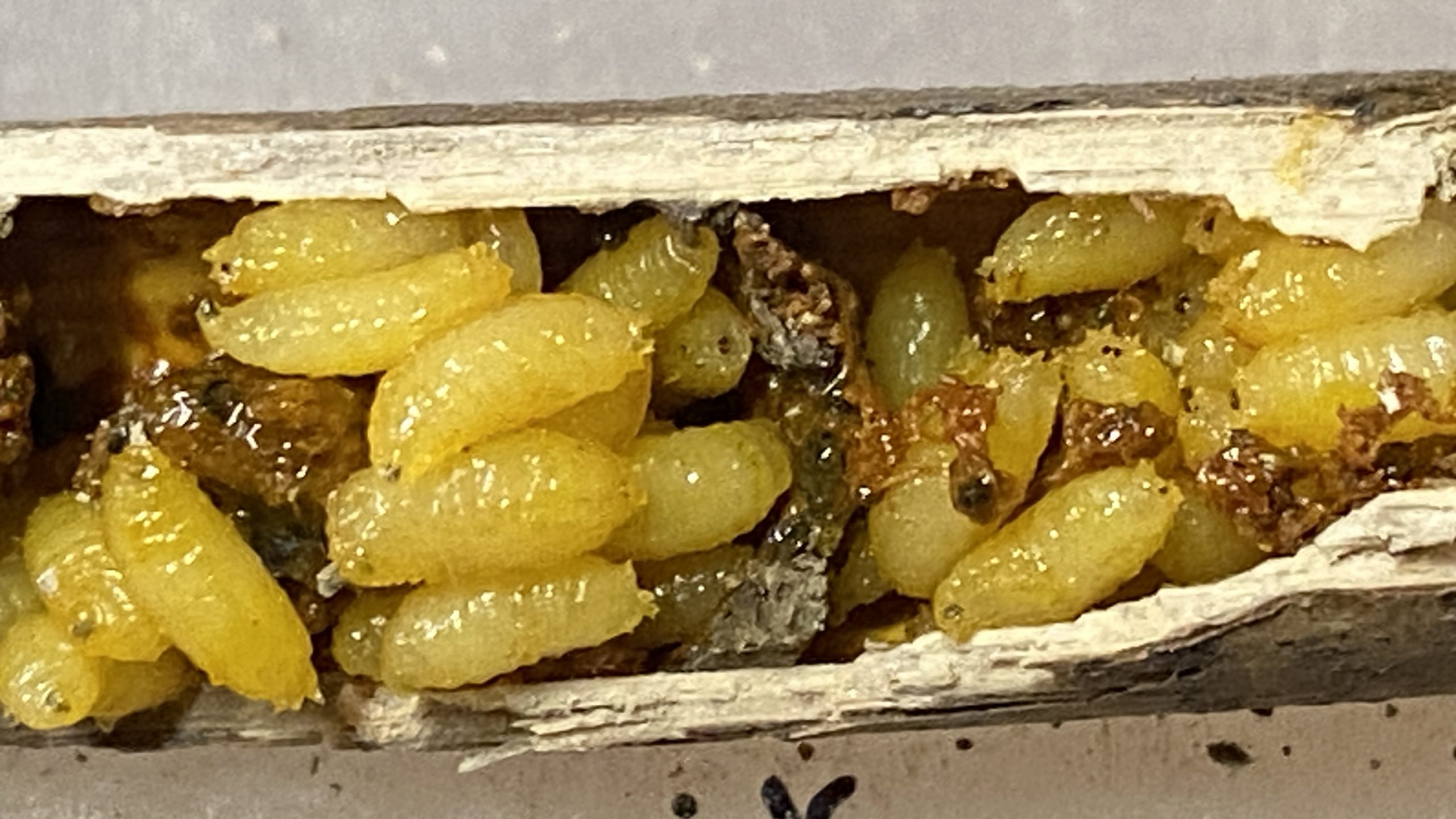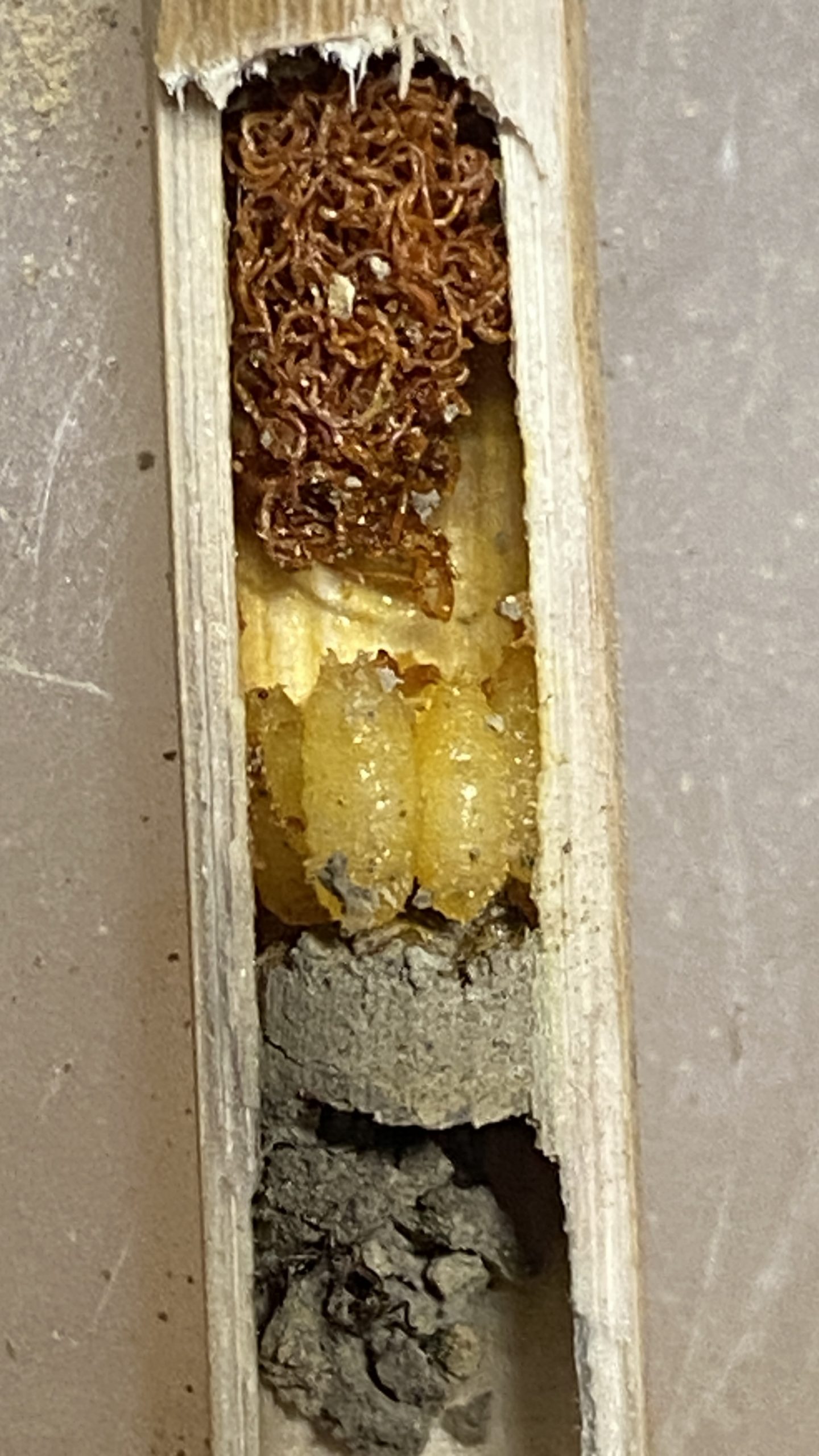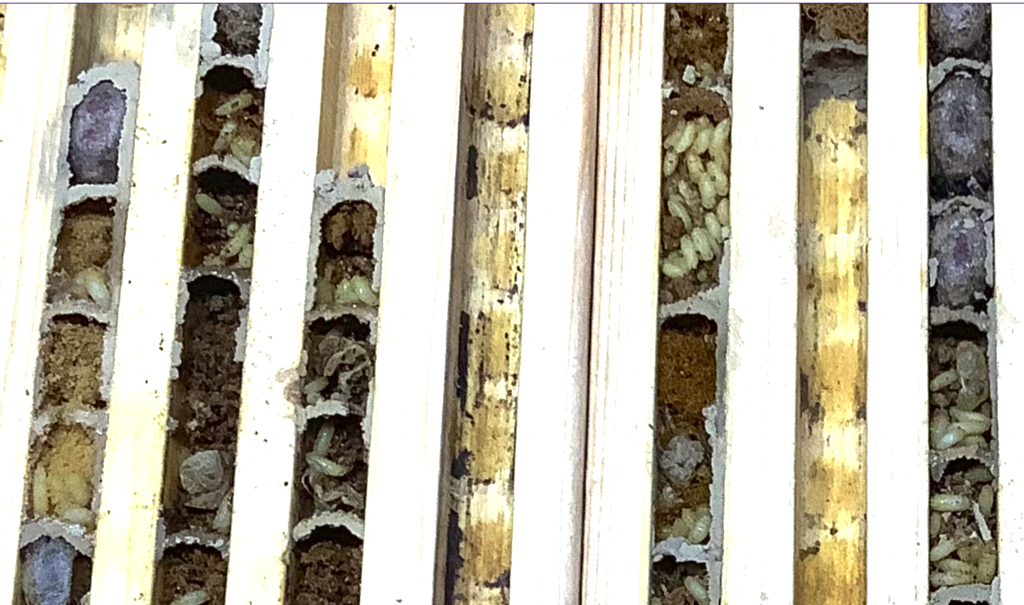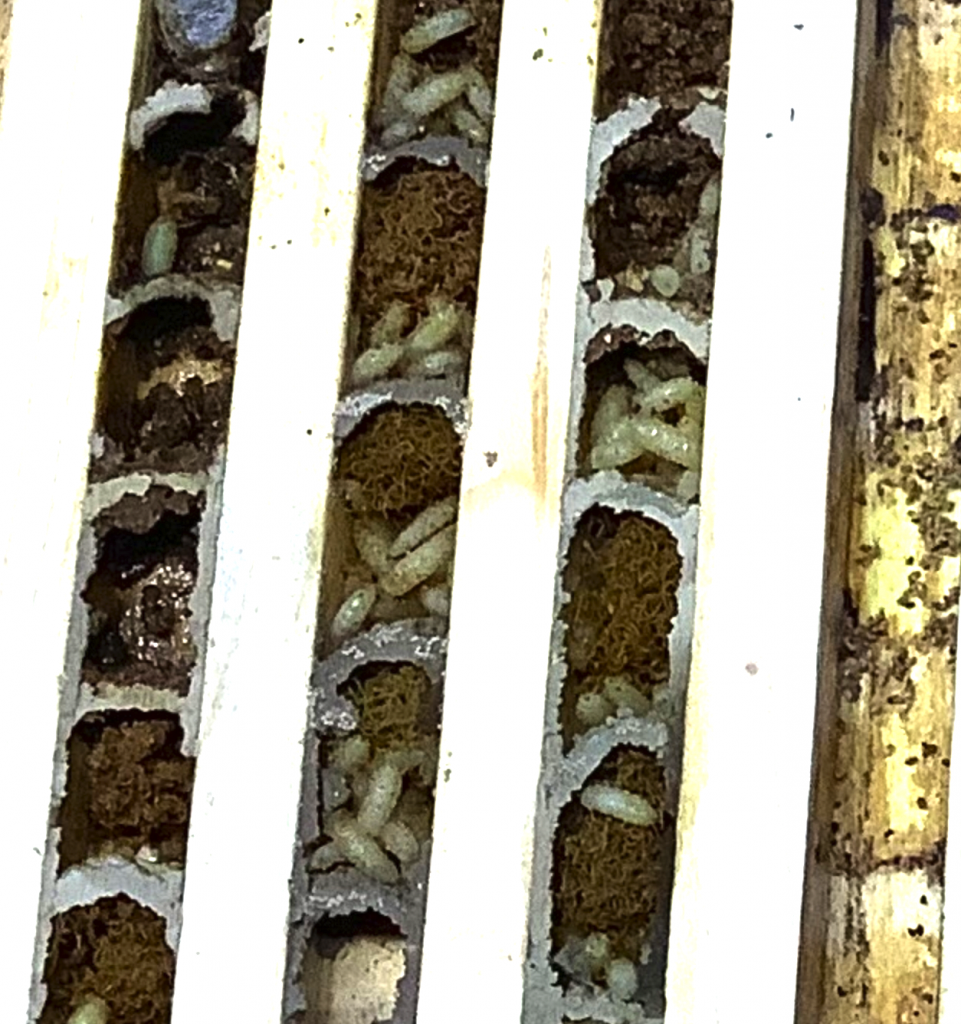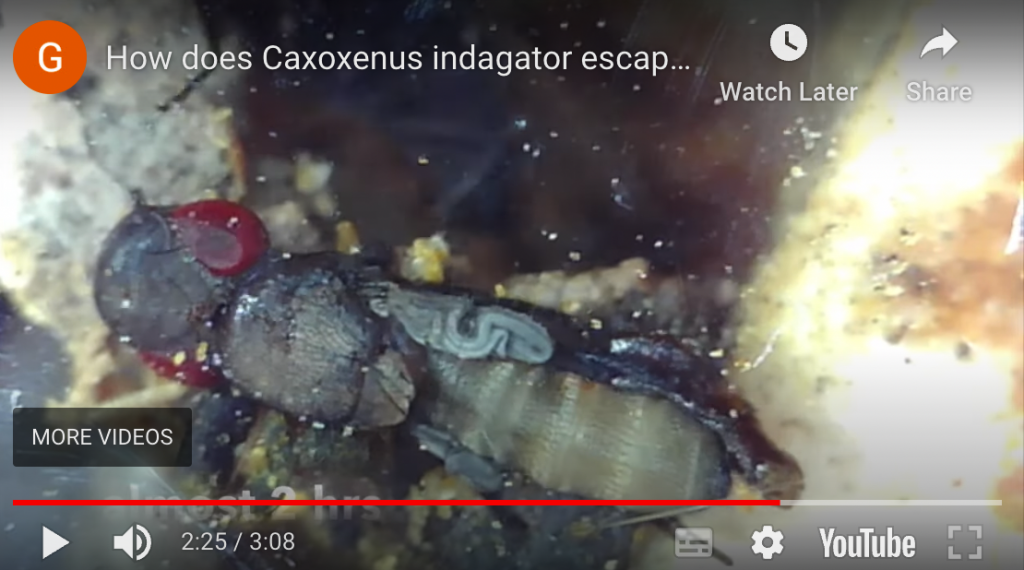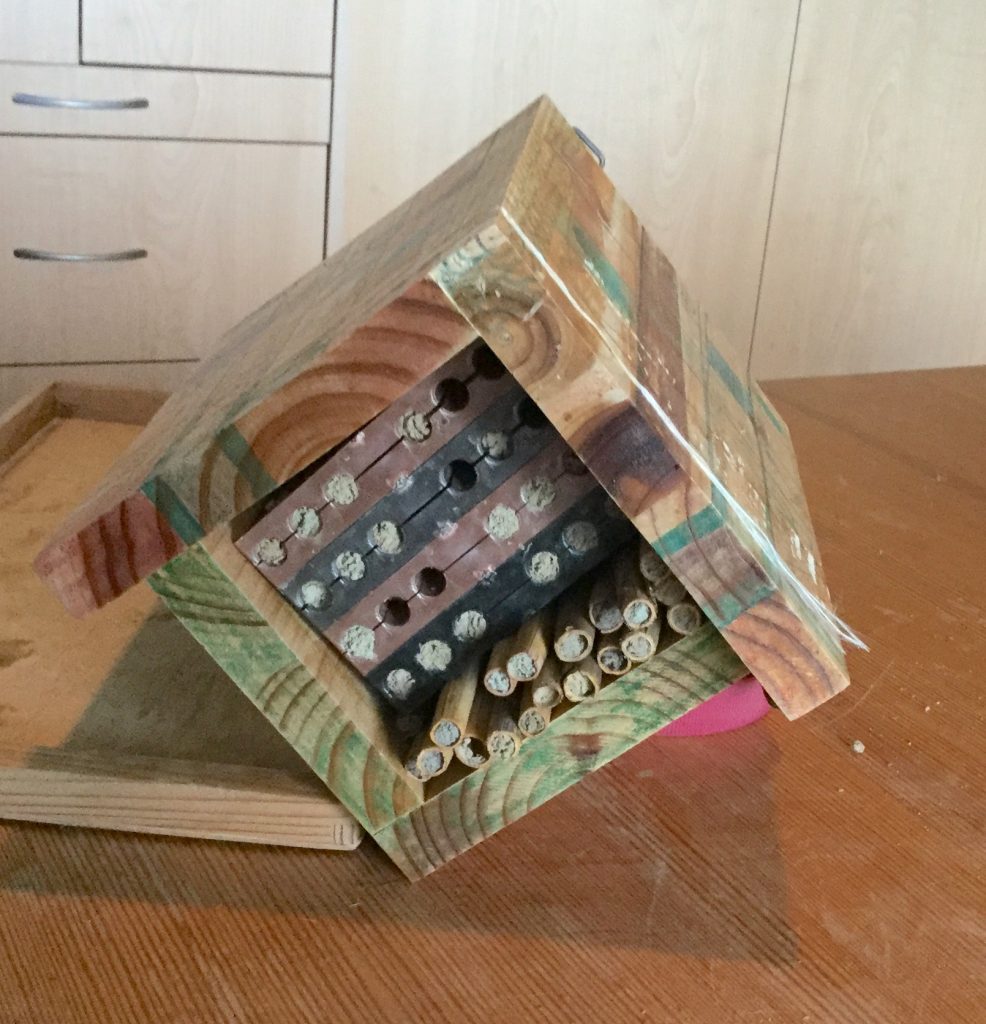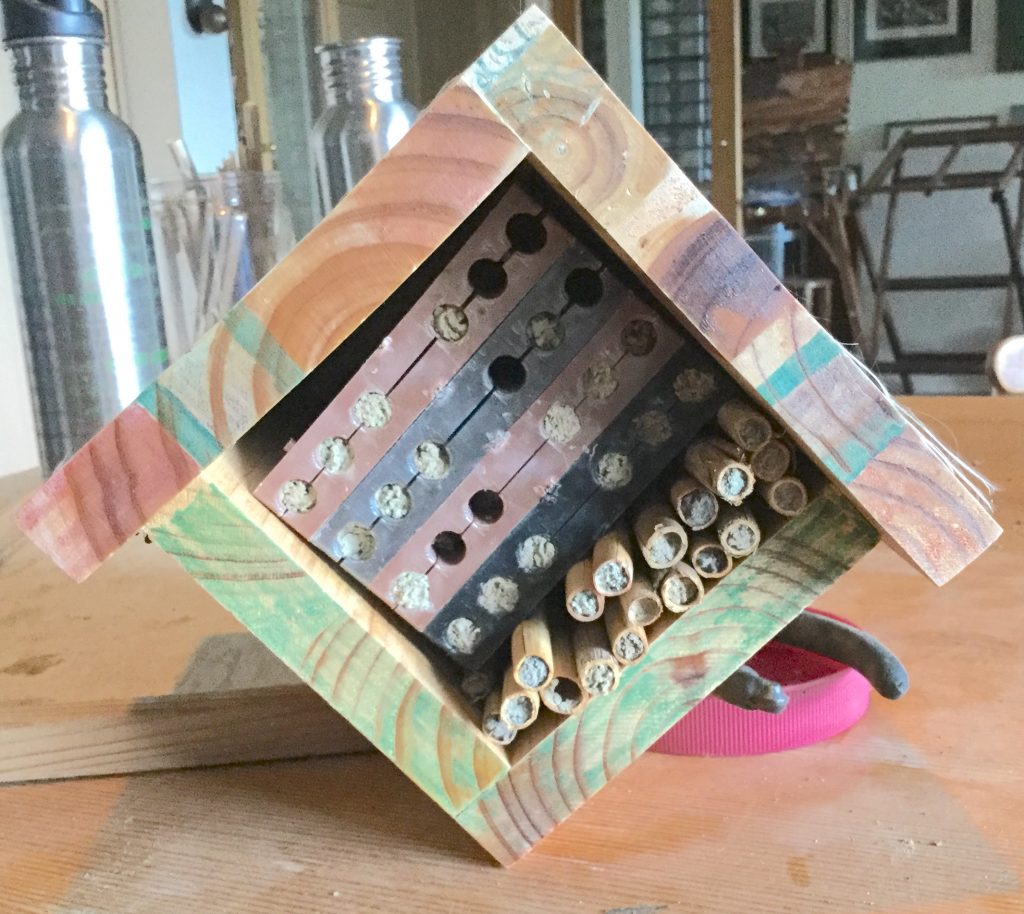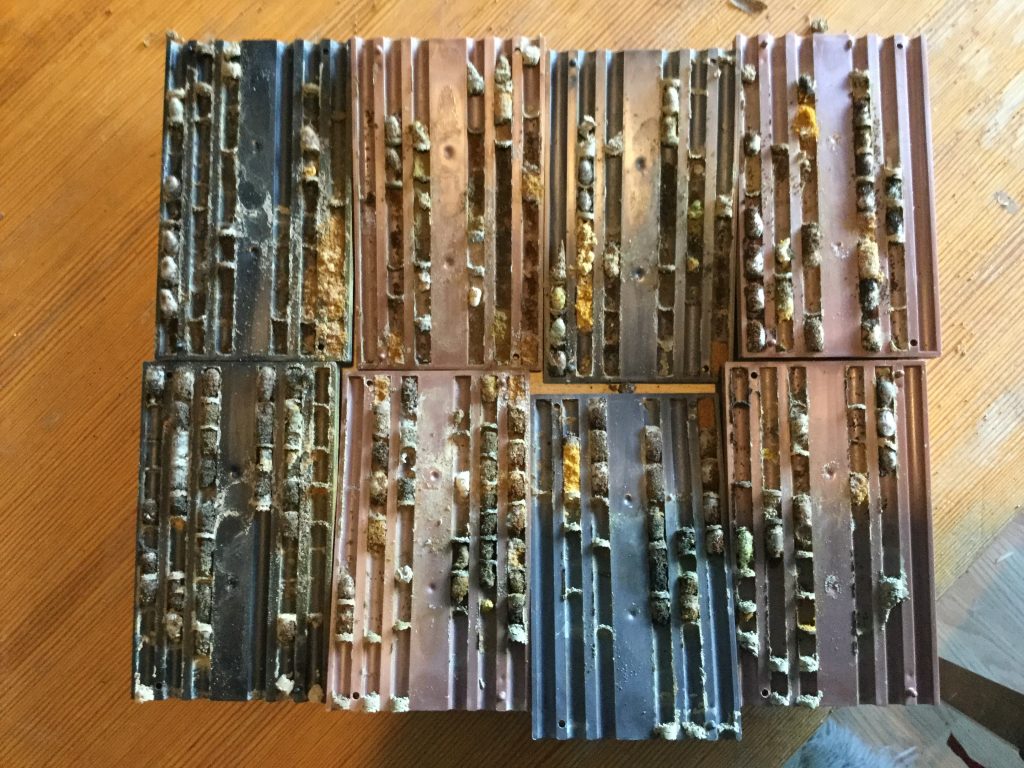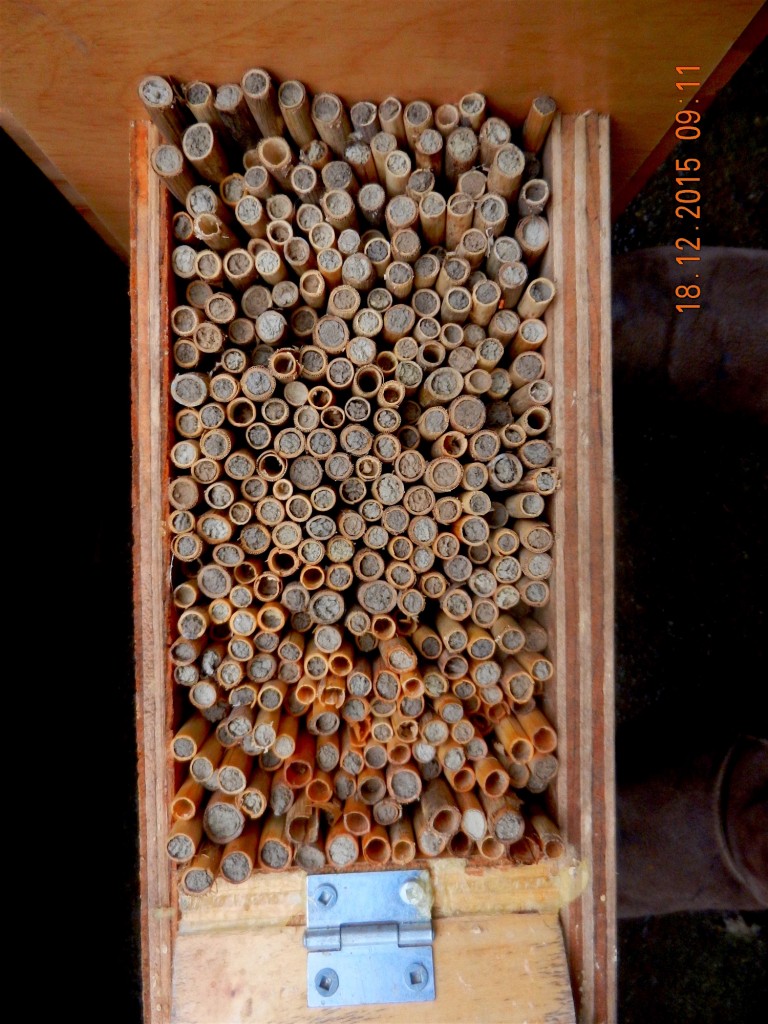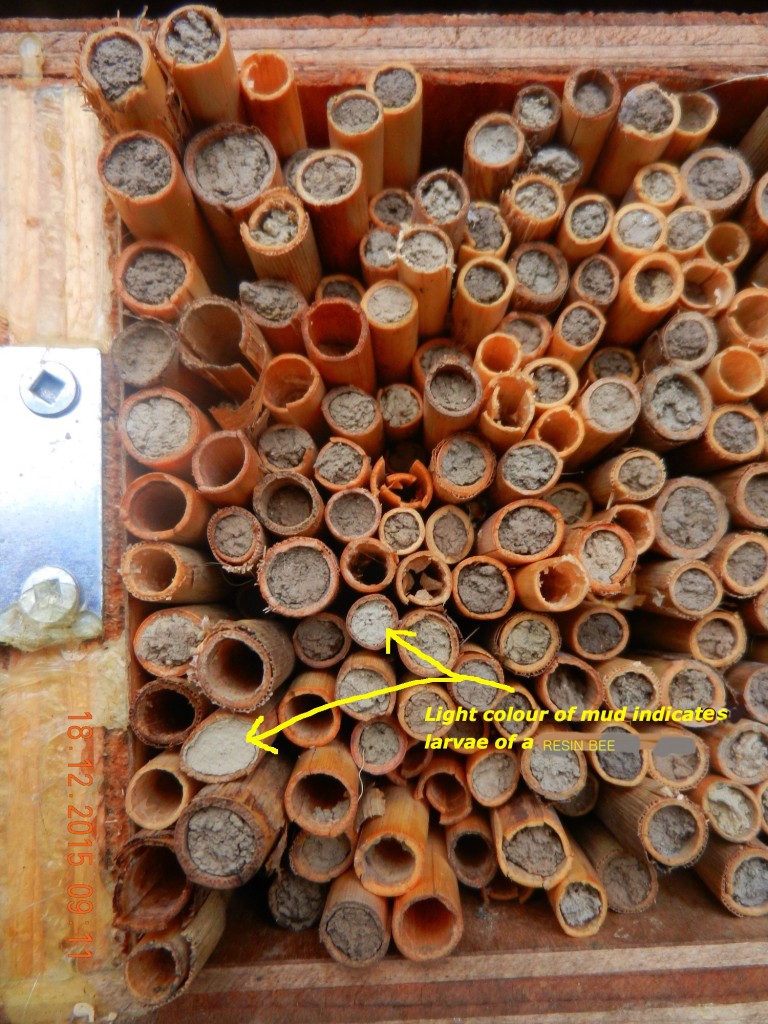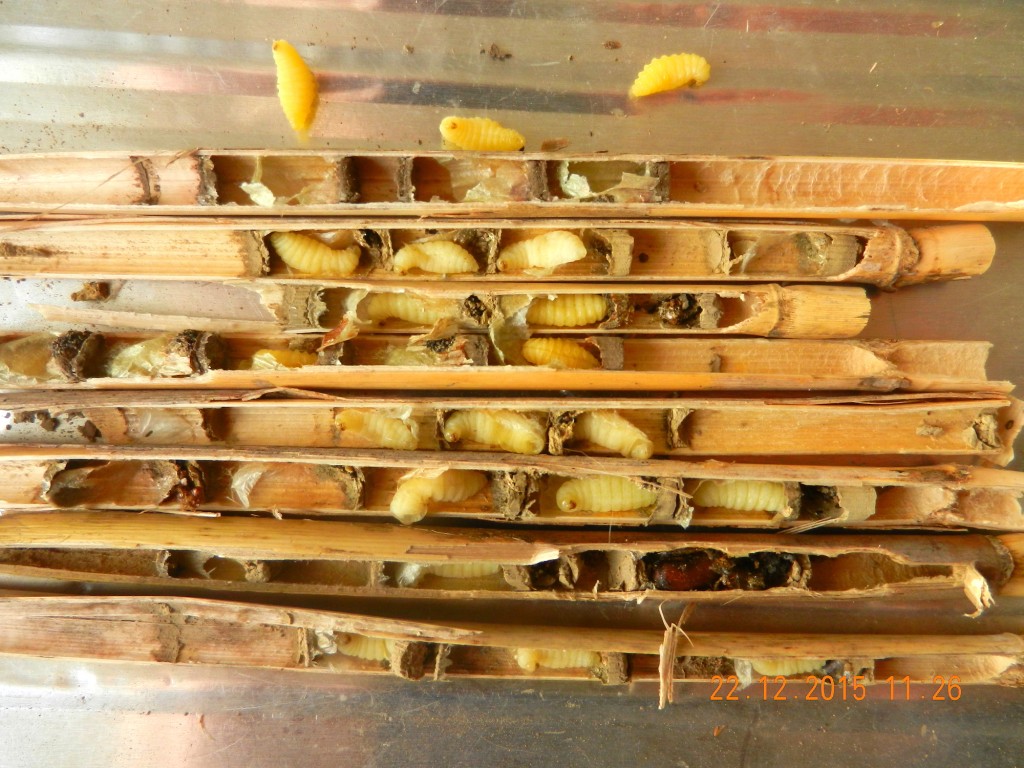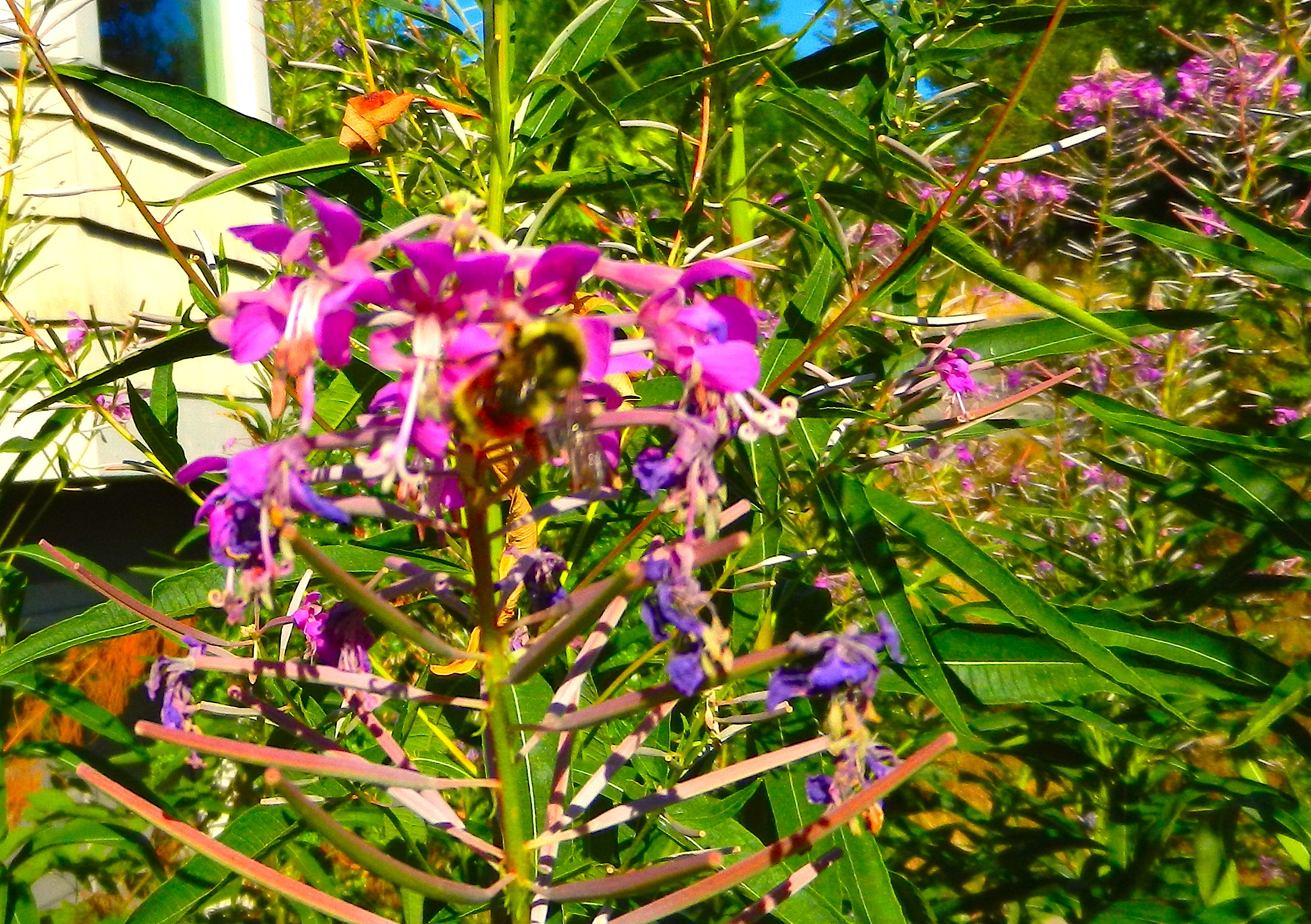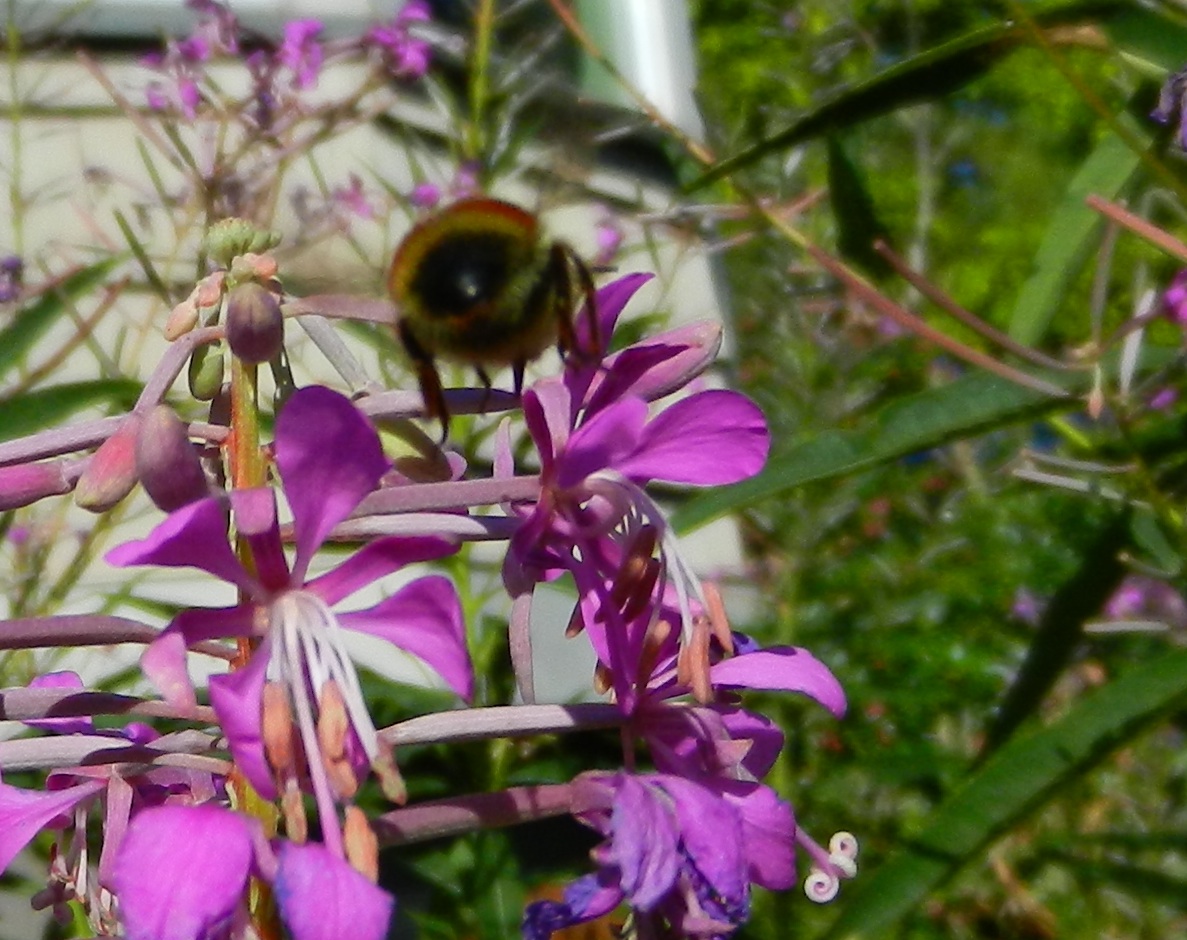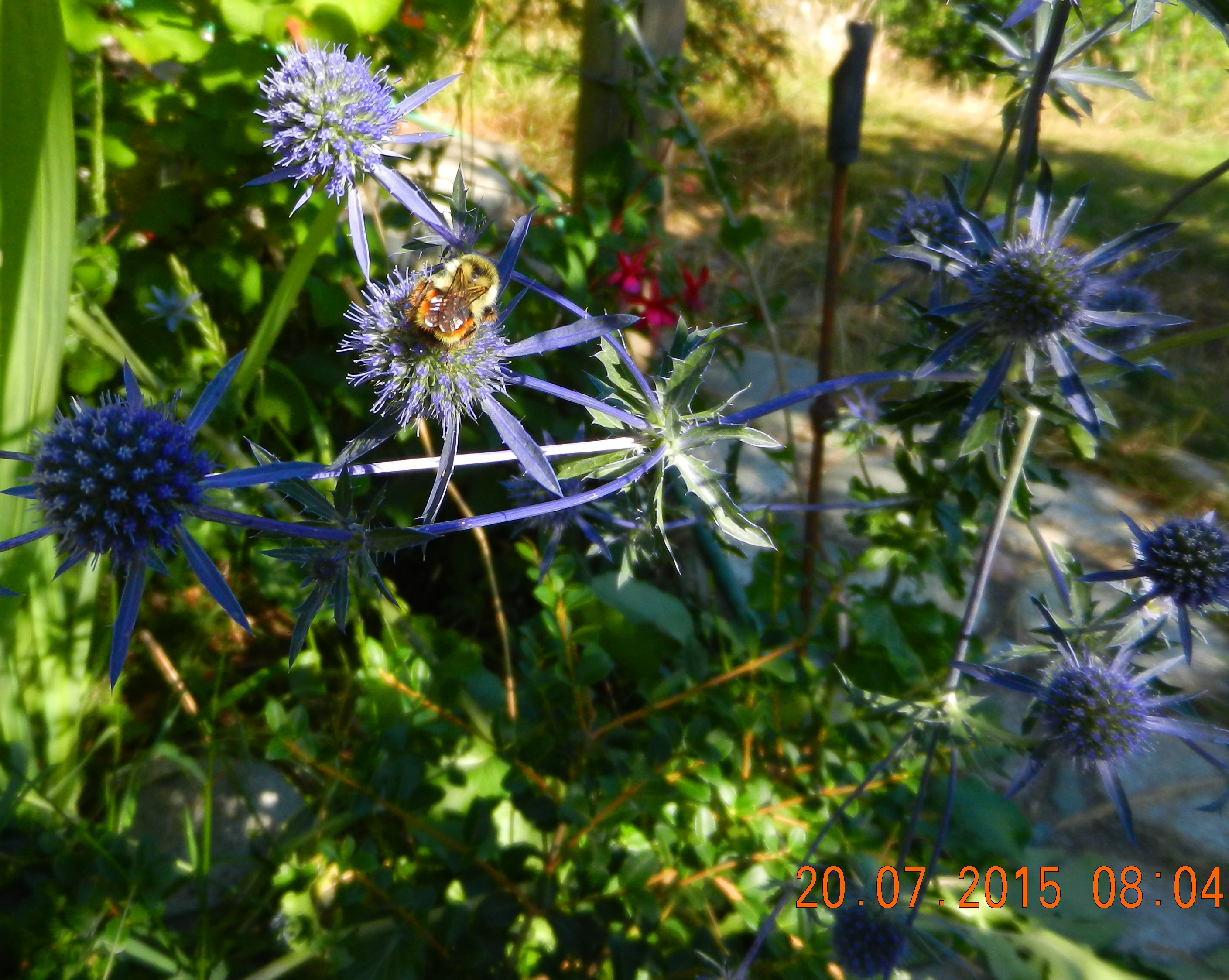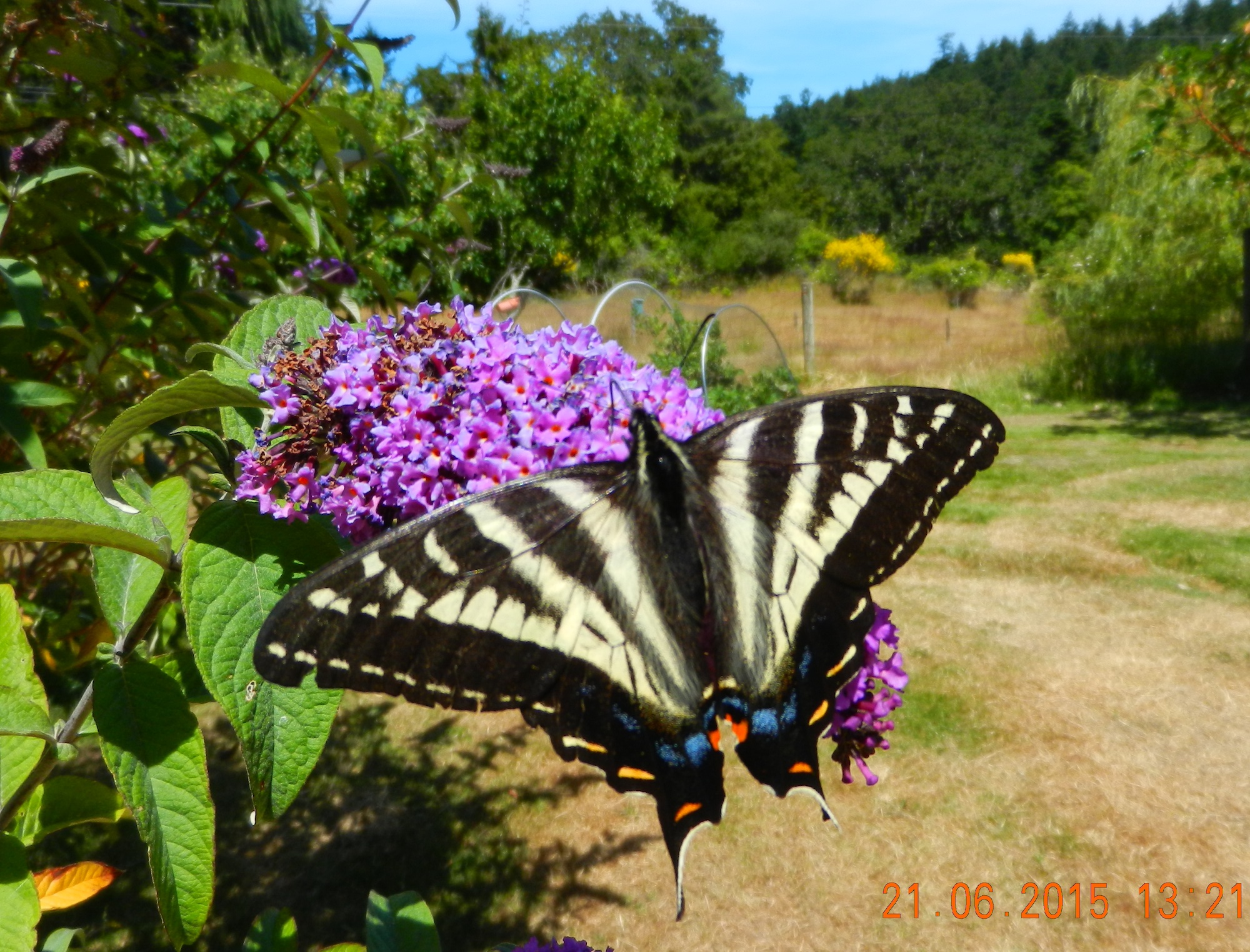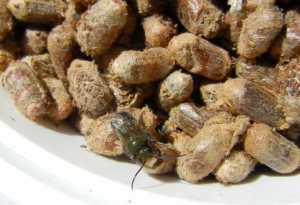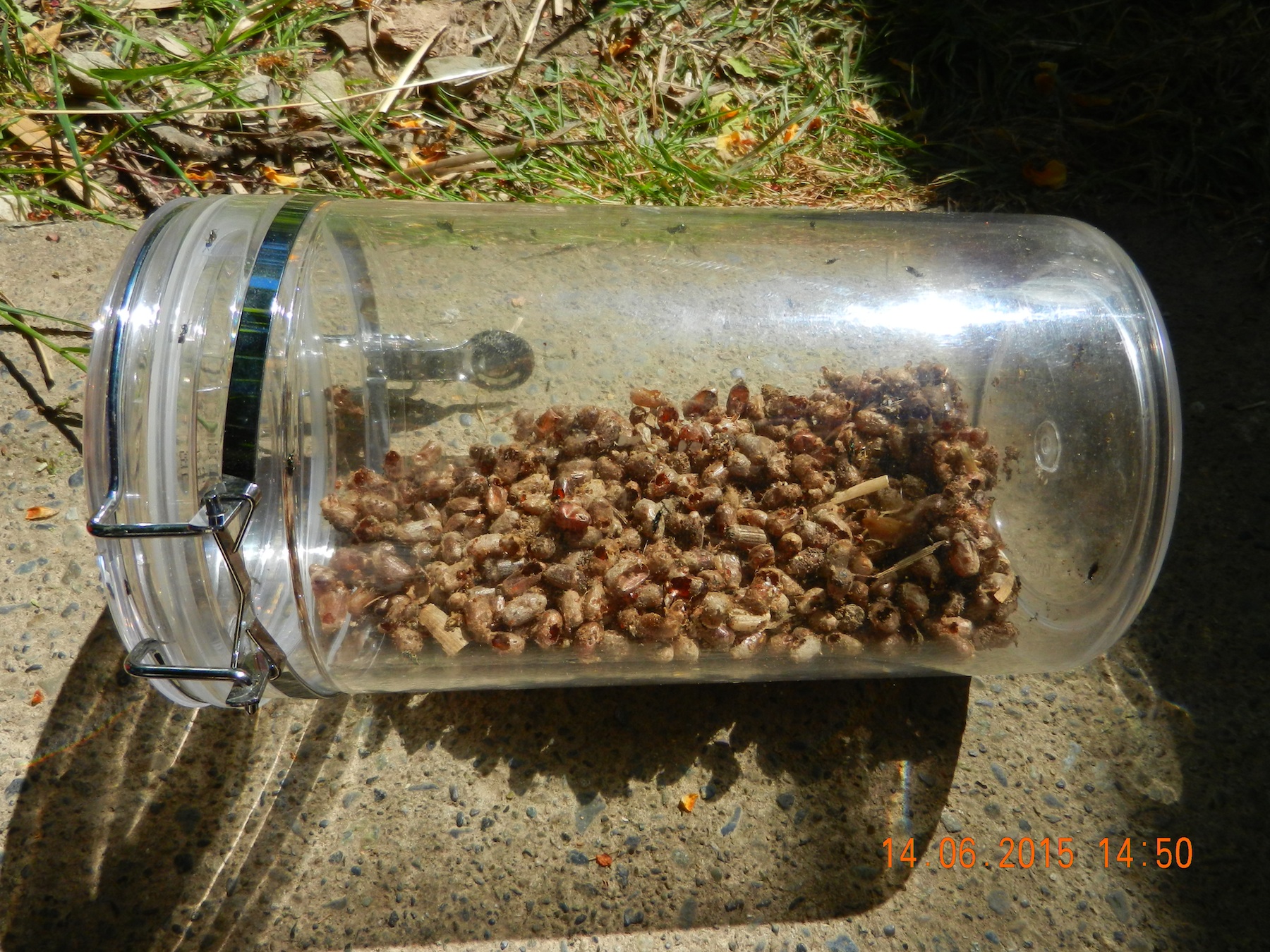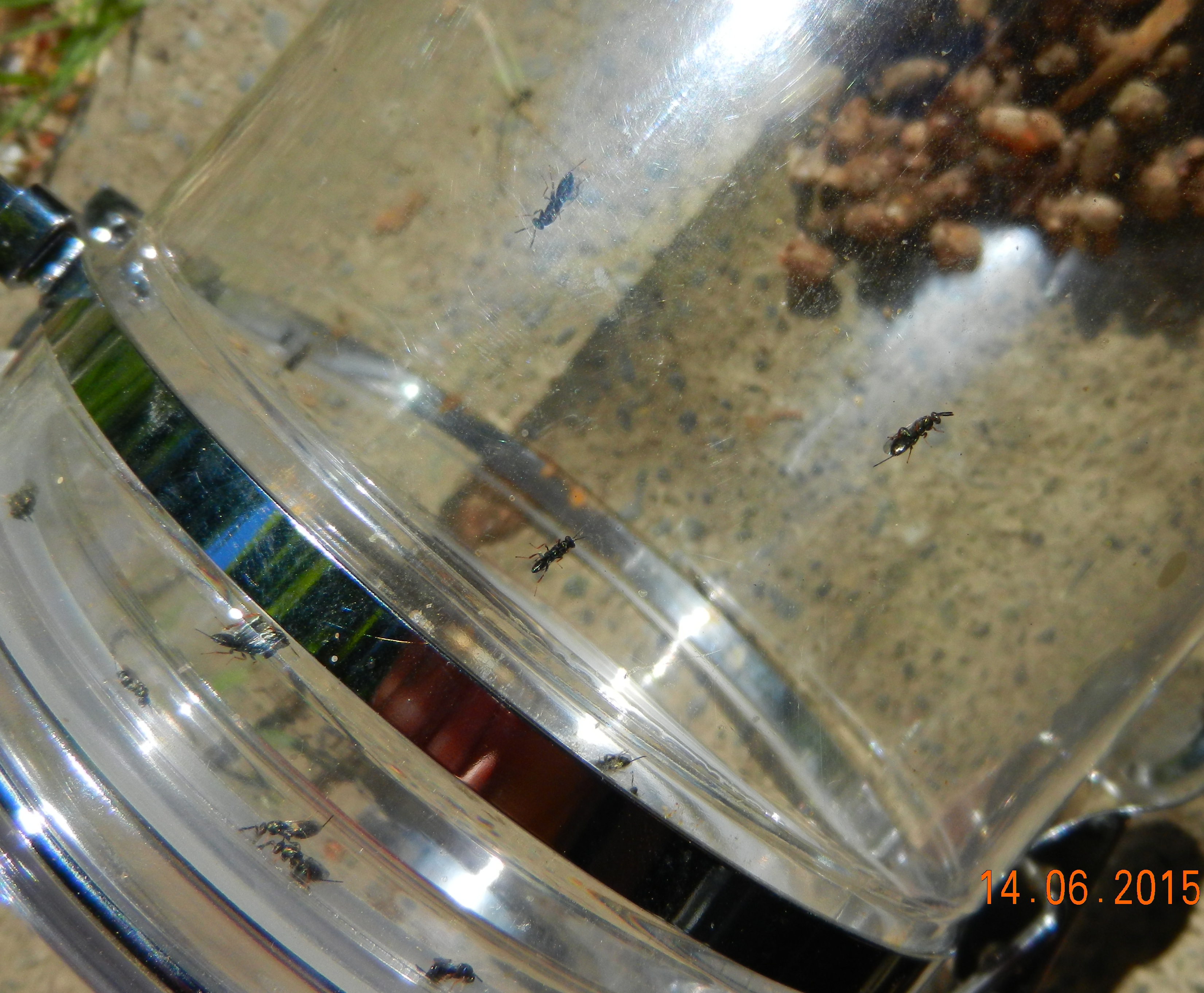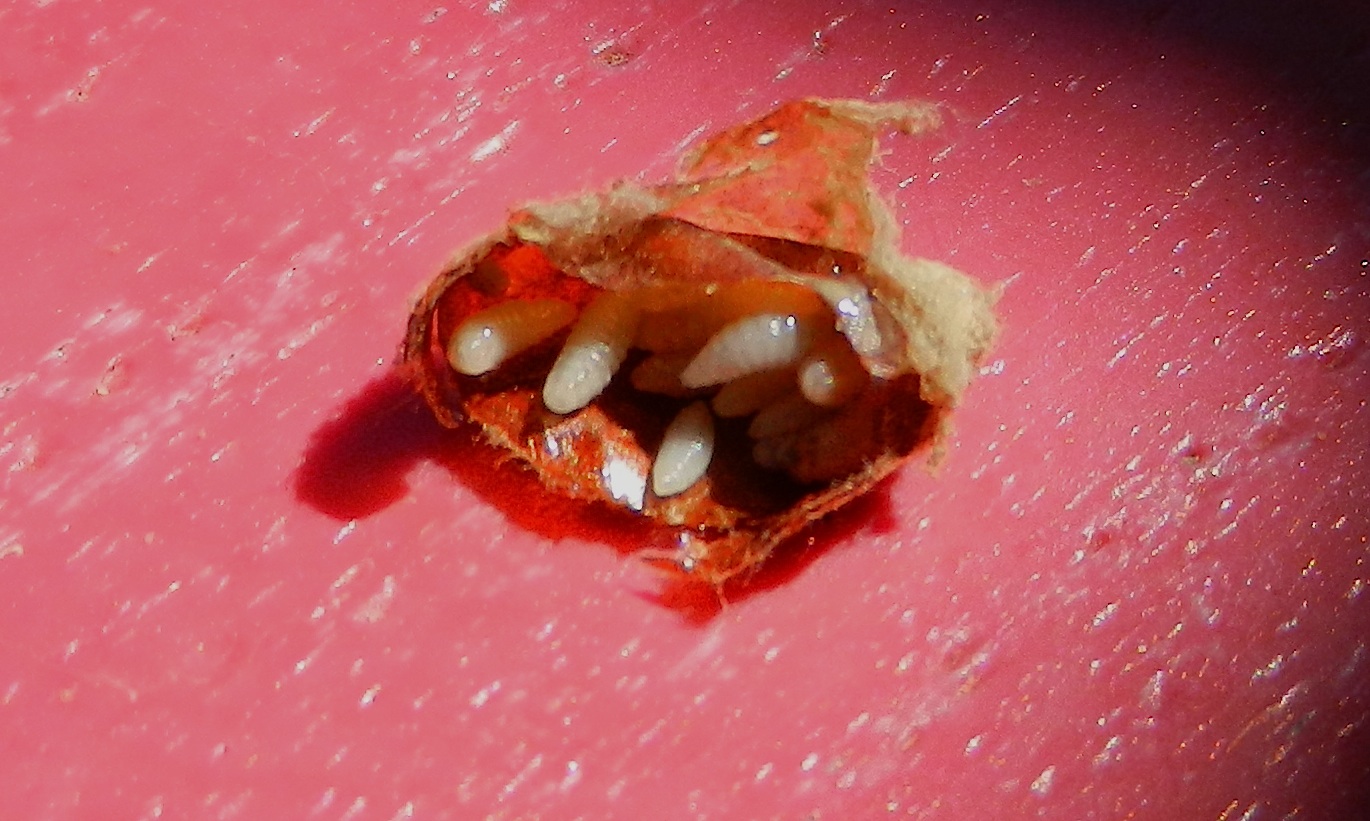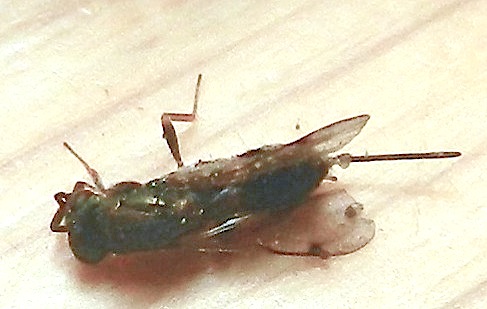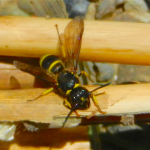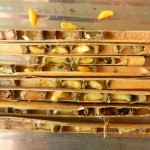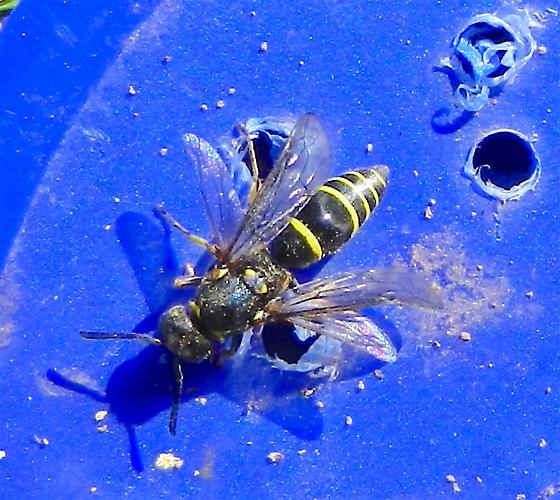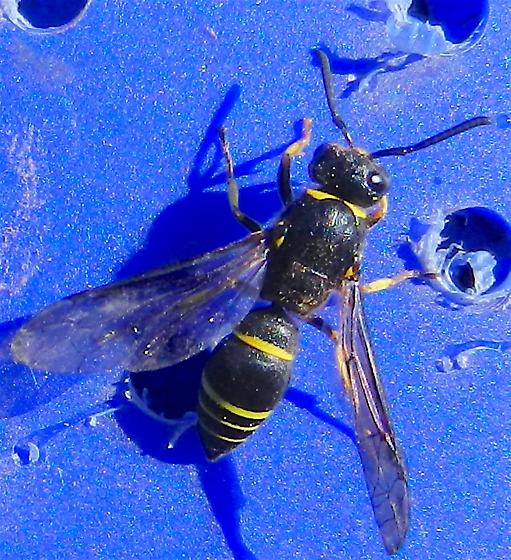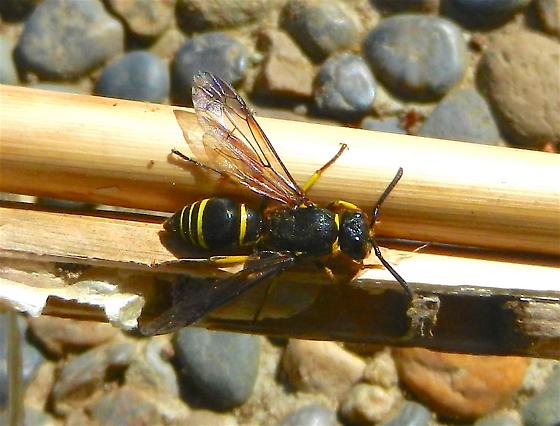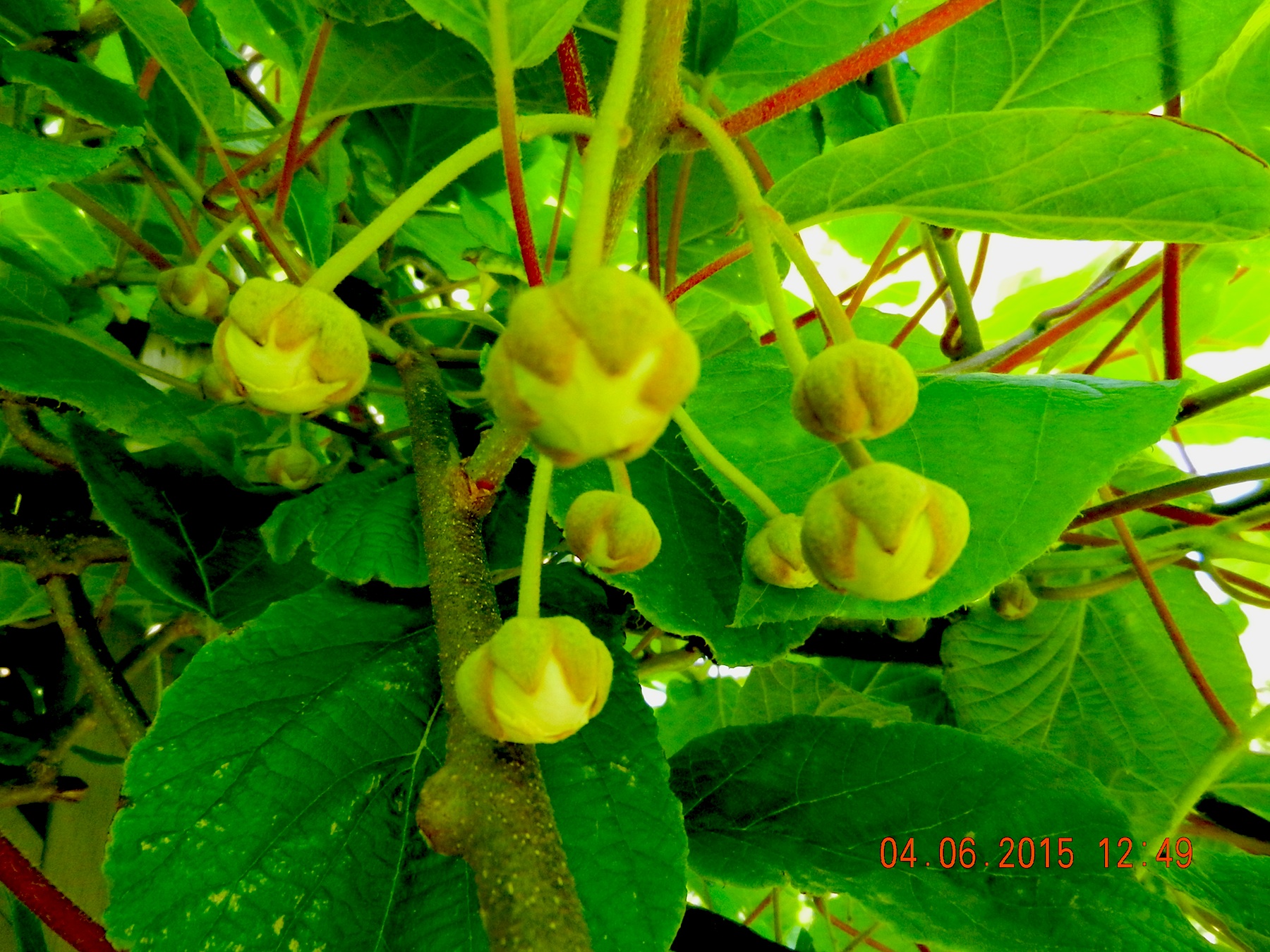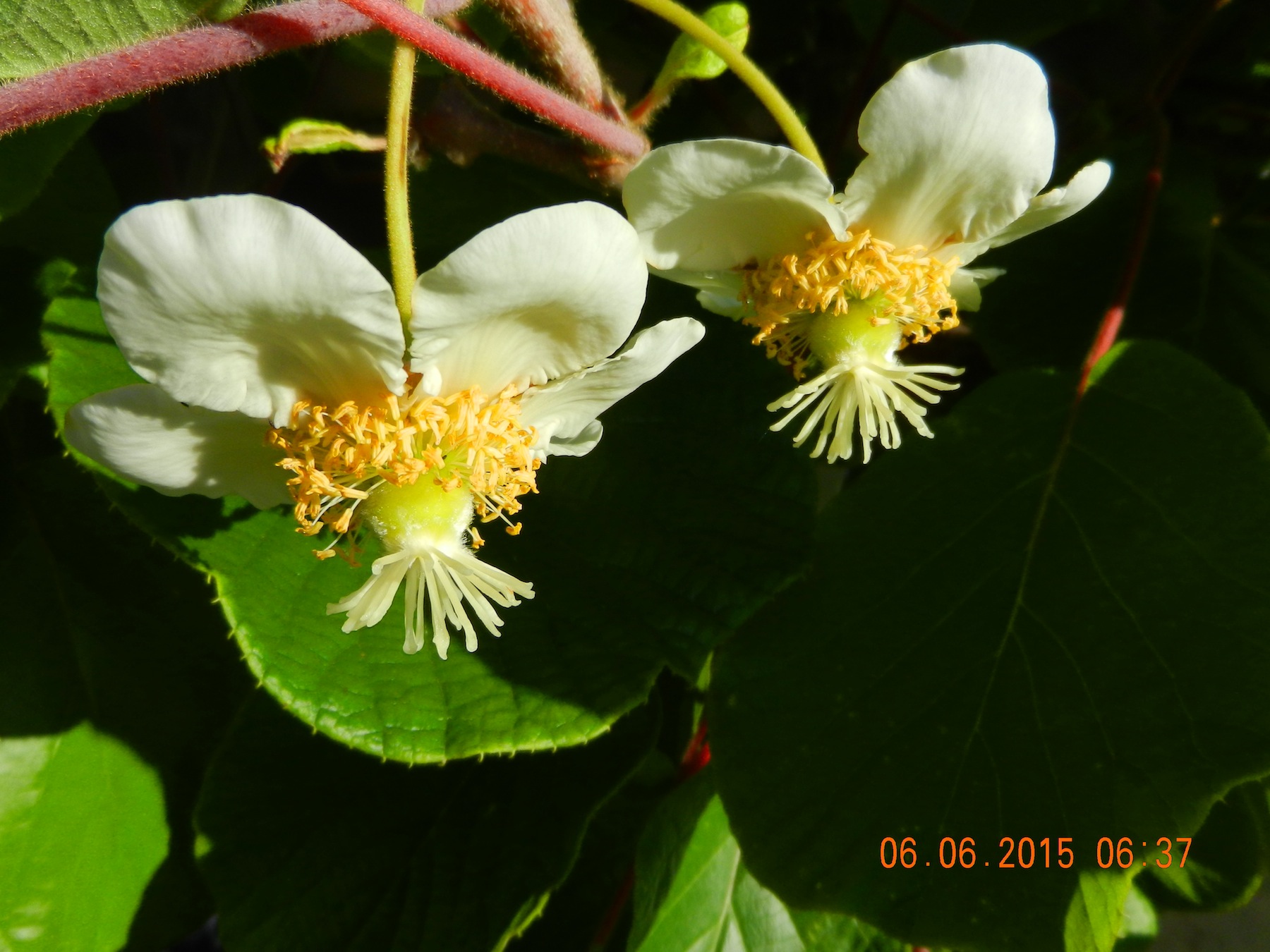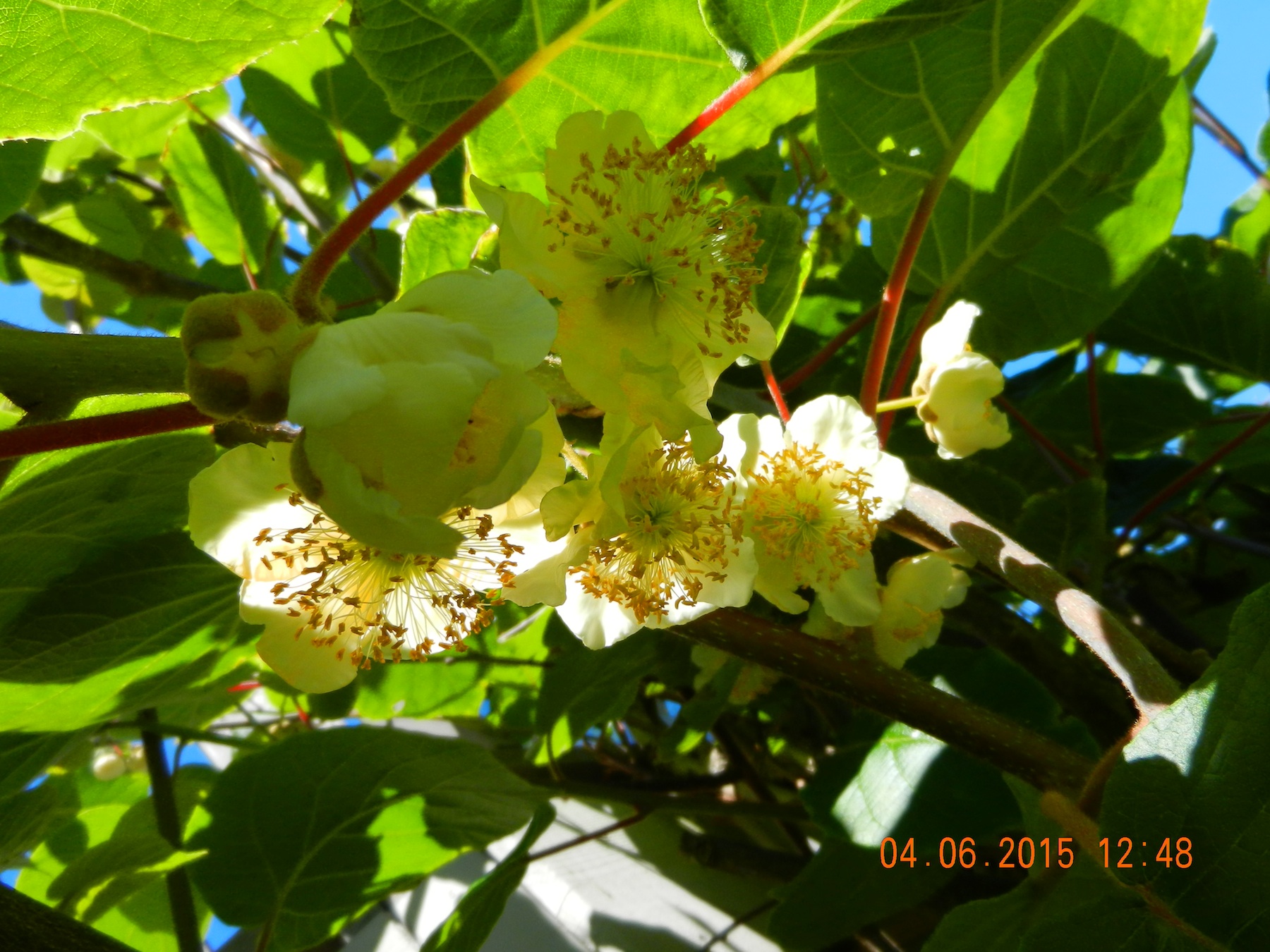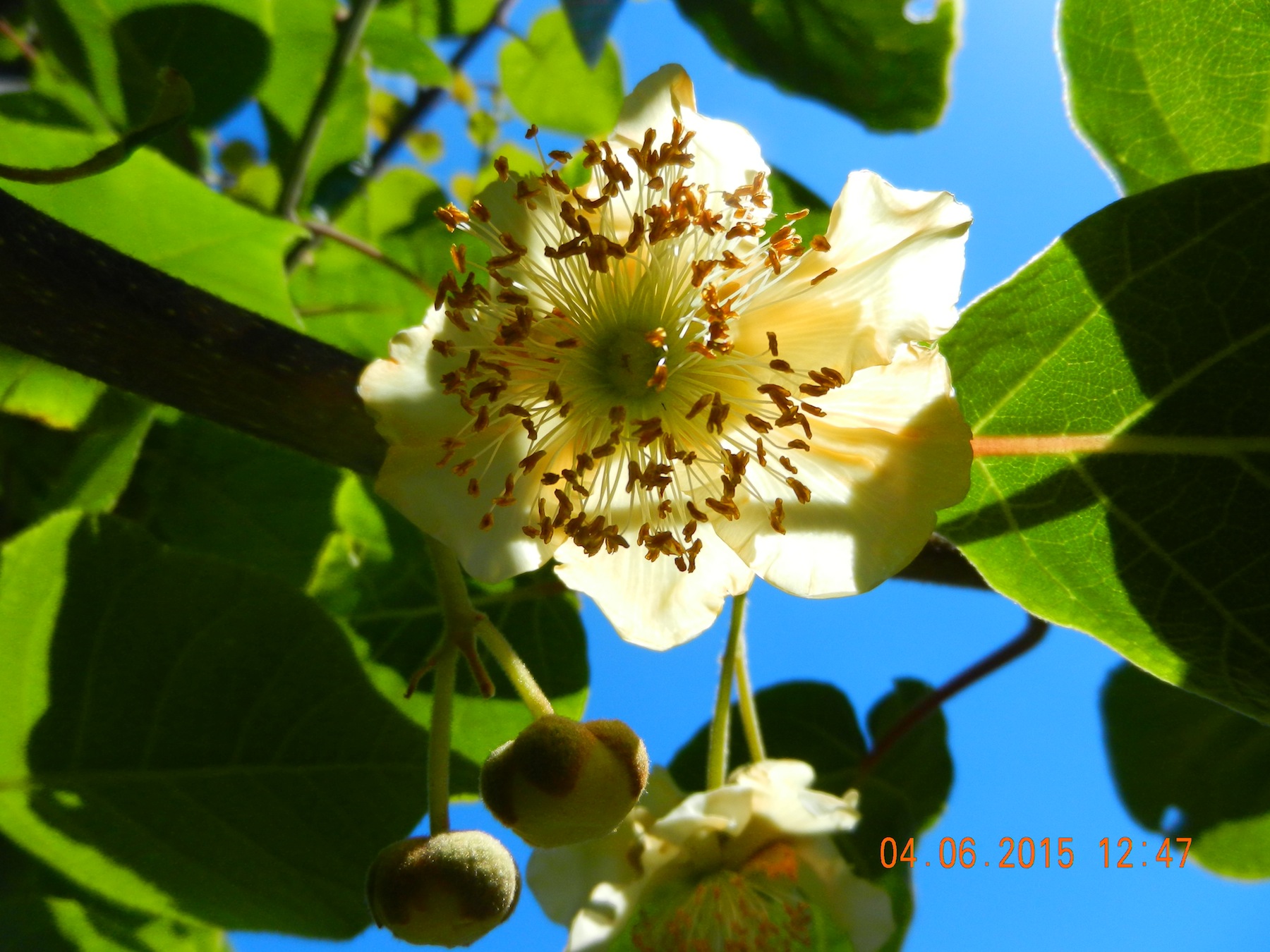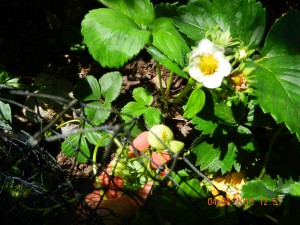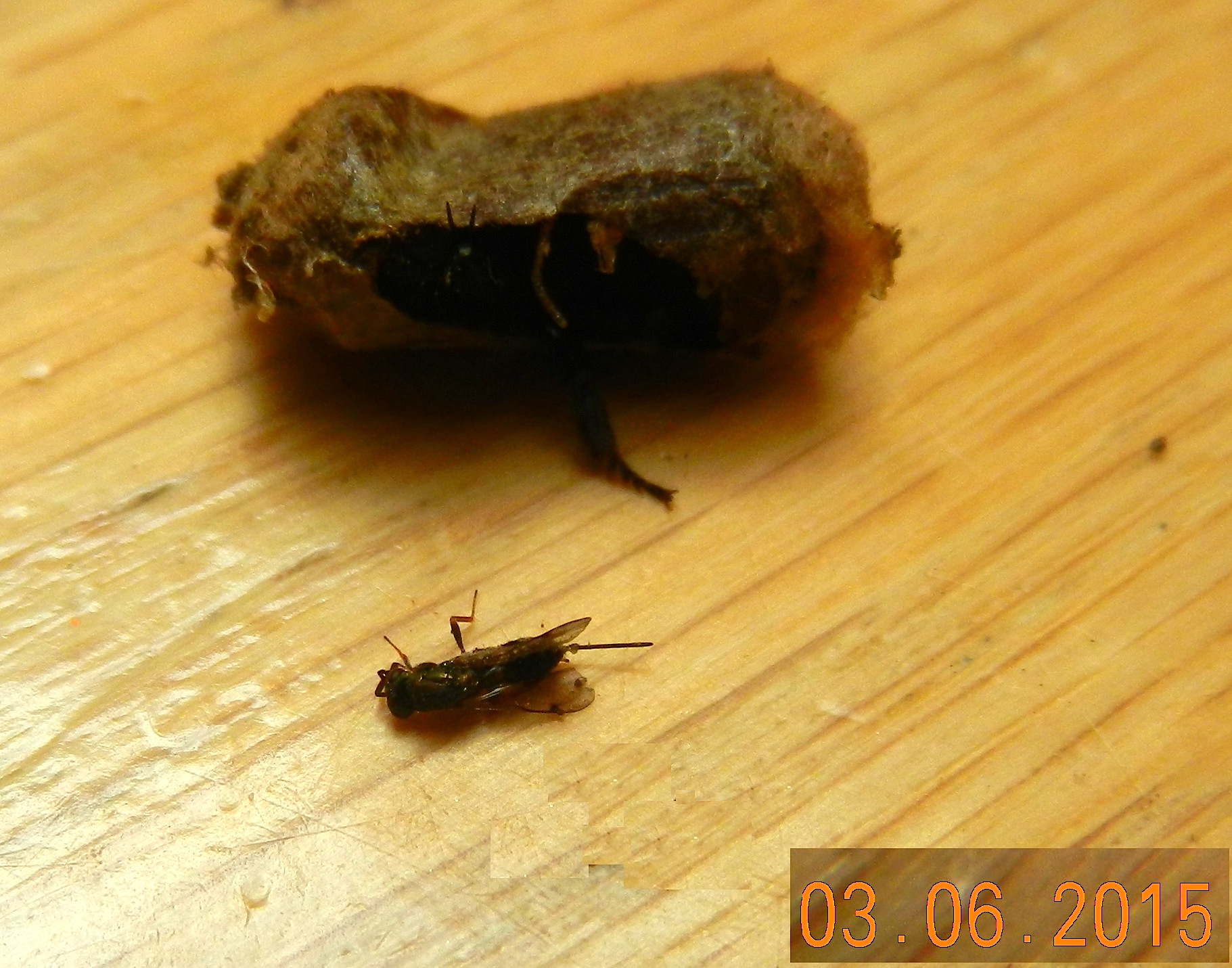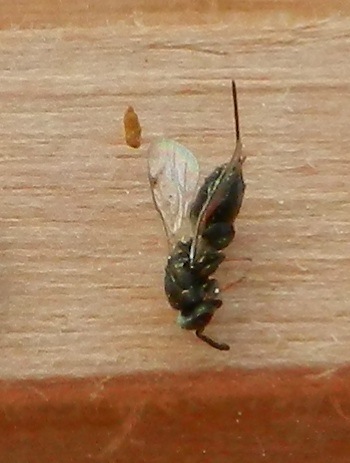Last year (2023), I first heard about the Houdini fly and I posted a message here about them occurring in the Duncan Area. Recently while i have been cleaning out my tubes I have found them in two of the locations where I provide bee boxes for my neighbours . One was in the Tower Point area where most of the tubes in one bee house were affected. The other was in the William Head area of Metchosin.
So it is essential that any old boxes with tubes should be eliminated or cleaned regularly if they are going to be reused. The Houdini flay maggots will consume all the cocoons in a tube . They are much larger than the Mono wasp larvae which are always inside a cocoon case. Also note the twisted purple mass of what I assume are feces
Cacoxenus indagator is a species of fruit fly.[1] It is a kleptoparasite, laying its eggs in the pollen-filled nest cells of mason bees.[2] On account of its ability to break out of those cells once hatched, it is commonly known as the Houdini fly.[3][4]
| Scientific classification | |
|---|---|
| Kingdom: | |
| Phylum: | |
| Class: | |
| Order: | |
| Family: | |
| Genus: | |
| Species: |
C. indagator
|
| Binomial name | |
| Cacoxenus indagator | |
